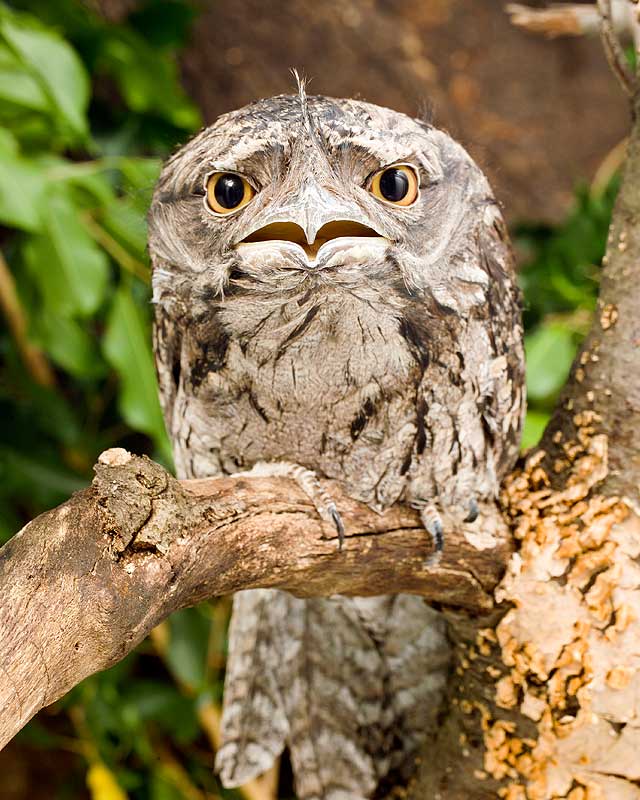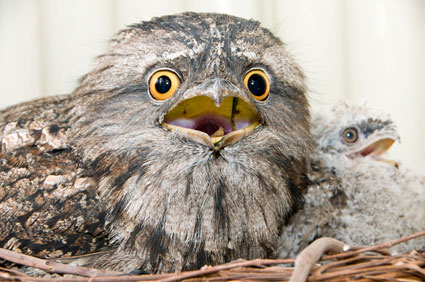
Podargus strigoides
SUBFAMILY
Podarginae
TAXONOMY
Caprimulgus strigoides Latham, 1801, New Holland. Three subspecies.
OTHER COMMON NAMES
English: Morepork, freckled or tawny-shouldered frogmouth;
French: Podarge gris; German: Eulenschwalm; Spanish: Podargo
Australiano.
PHYSICAL CHARACTERISTICS
13.5–21 in (34–53 cm); 6–24 oz (180–670 g). Male’s upperparts
are normally grayish with bold black streaks and intricate finer
bars and lines; underparts are lighter grayish with blackish
streaks, white barring, and variable brown to rufous suffusion.
Female often darker with more rufous suffusion.
DISTRIBUTION
Australia and Tasmania.
HABITAT
Woodland, scrub, tree groves, plantations, gardens with trees.
BEHAVIOR
Daytime roosts are on tree branches; active at night in territory
defended by pair of birds.
FEEDING ECOLOGY AND DIET
Feeds mainly by sallying from perch to take large insects, other
arthropods, or small vertebrates from ground.
REPRODUCTIVE BIOLOGY
Nest a platform in tree or bush, usually containing clutch of
one to three eggs. Daytime incubation by male, incubation period
about 30 days. Young fed by both parents, fledging period
25–35 days.
CONSERVATION STATUS
Not threatened.
SIGNIFICANCE TO HUMANS
Nocturnal calls familiar to rural Australians, but much confused
in past with those of owls.
Photo Gallery of - Tawny frogmouth




 Animalia Life
Animalia Life